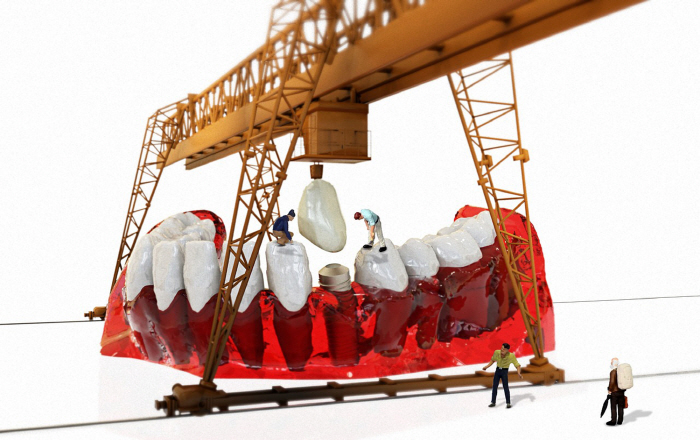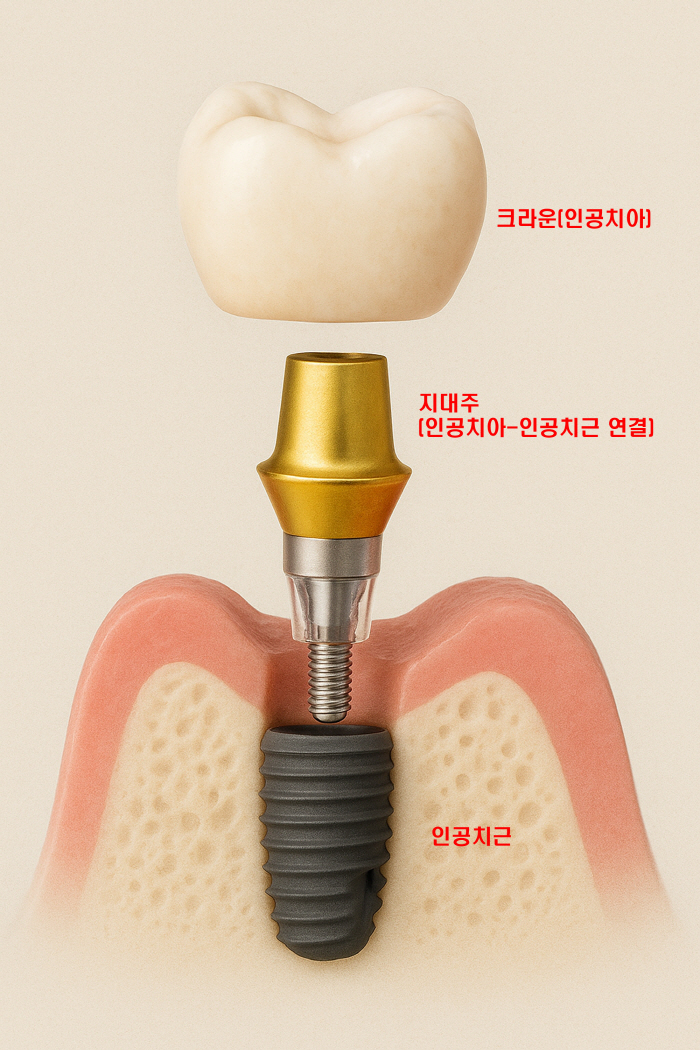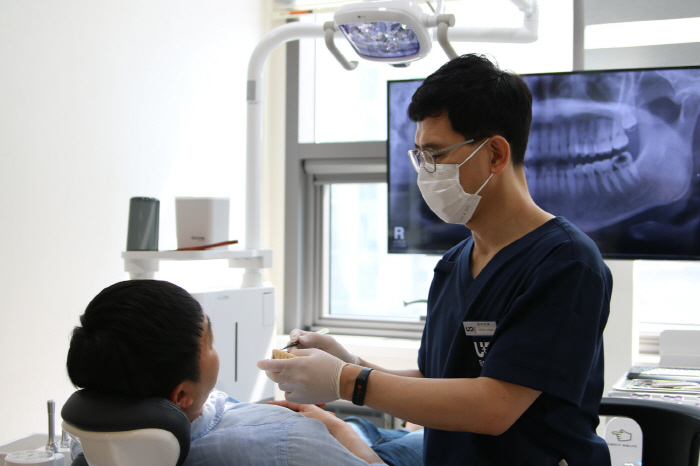33.6x increase over 8 years of implant procedures...You have to have bones rather than money. It's possible
Aug 27, 2025
|
Implants are often thought of as semi-permanent treatments, but if care is neglected, hard-planted implants may have to be removed and re-opened.
◇ 700 implants per 10,000 people 'World No. 1'…'Choose unconditionally' Concern
20 years have passed since full-scale dental implants began in Korea. Until the early 2000s, cases of procedures were uncommon at high cost, but as the cost fell due to the advent of domestic implants, it has become a common treatment method.
The number of patients who underwent implant procedures due to aging population and health insurance coverage (over 65 years old) increased 33.6 times from 52,873 in 2014 to 1,776,827 in 2022.
In addition, Korea ranks first in the world with about 700 implant placement cases per 10,000 people. The figure is also overwhelming compared to Spain (300 cases) and Germany (200 cases).
As a result, there are also concerns about treatment that unconditionally selects implants rather than preserving natural teeth.
|
◇'Bones' Implantable...Considering the health of your mouth
The implant needs to be considered include ▲ when the tooth is completely lost, ▲ when the bridge and denture are impossible or inefficient, ▲ when the authoring function is greatly reduced due to lack of teeth, ▲ when there is a problem with appearance or pronunciation due to lack of front teeth.
Namgoong Chul-hee, CEO of Sejong Yudith Clinic, said "Implants are much more advantageous than bridges and dentures in that they can independently restore defects without damaging adjacent teeth. In particular, it can be an alternative that can greatly improve the quality of life for patients who are wearing full dentures or feel uncomfortable with existing prosthetics", he explained.
Not all patients can receive the implant right away.
As a joke, there is a saying that in order to get an implant procedure, there should be a bone rather than money. This is because implants are fixed to bones, so if bone health is poor, the procedure is difficult. First, the amount and quality of the jawbone (alveolar bone) must be sufficient, and the health of soft tissues in the oral cavity, including the gums, must be good.
If bone tissue is insufficient, an appropriate amount of bone should be secured by 'bone transplantation' before or during implant placement.
In addition, the overall level of oral hygiene of patients greatly influences treatment success. If bacterial management in the oral cavity is insufficient or smoking habits are present, the risk of inflammation or failure to adhere to the bone may increase, so thorough diagnosis is required before the procedure.
In the end, the conditions for implant placement should be determined by comprehensively considering the health conditions of the mouth and body, not just the presence or absence of teeth.
◇ Patients with chronic diseases such as diabetes and osteoporosis need a careful approach
Implant treatment is carried out step by step, and the overall treatment period is usually 3 to 6 months, and it may take longer if bone transplantation is required or if there is a systemic disease.
"Recently, as soon as extraction is performed, inflammation is removed, implant placement, alveolar bone transplantation, and alveolar connection are performed from extraction to surgery with a single anesthesia, reducing time and patient burden," said Namgung Cheol-hee, president of the representative office.
However, patients with chronic diseases need a careful approach when performing implant procedures.
First of all, in the case of diabetes, implant procedures are possible for patients with good blood sugar control. However, if blood sugar is unstable or uncontrolled, there is a high risk of infection or delayed recovery after surgery, so thorough internal consultation and management should be preceded.
Most hypertensive patients also have no major problems if their conditions are stably managed with drugs, but their blood pressure can rise sharply due to stress during surgery, which requires careful monitoring. In the case of osteoporosis, the type of treatment drug is important. In particular, if you are taking bisphosphonate-based drugs for a long time, there is a possibility of jawbone necrosis, so you must check your drug history and bone condition in advance. As such, it is a principle for chronically ill patients to enter treatment after securing safety through prior treatment and cooperation.
◇It can be used for more than 20 years under thorough management…Regular checkups are important
The lifespan of the implant depends on the individual's oral condition and management habits.
In general, it can be used for more than 10 to 15 years, and some studies show that it can be used for more than 20 years if thorough management is performed at the same time.
In order to use the implant for a long time, oral hygiene management must be thorough. In addition to general brushing, it is important to use auxiliary devices such as dental floss, interdental toothbrushes, and waterpick to keep clean so that no food debris or plaque remains around the implant. If you have a habit of clenching your teeth, it is also helpful to wear a mouthpiece. It's also good to avoid smoking and hard food.
Above all, the key to long-term use is to periodically check the health status of tissues around the implant through regular dental checkups and respond early before abnormalities occur.
CEO Namgung Chul-hee said "Implants are not simply a treatment for planting one tooth, but a complex treatment process that can be successful only when supported by overall oral and systemic health. In order to reduce discomfort caused by tooth loss and restore quality of life, accurate diagnosis and treatment plans appropriate to the patient's condition should be prioritized over simple cost or procedure speed," he stressed.
|
This article was translated by Naver AI translator.
















